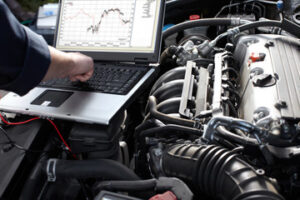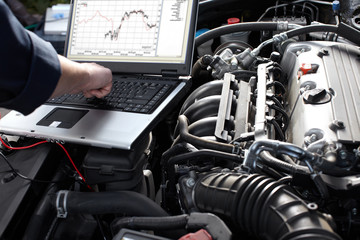A good mechanic should have proficient customer service skills. They can help ease customers’ concerns and explain what work will be required to fix their car.
Ask the repair shop what kind of parts they’ll use. New, or original equipment, parts have a warranty from the manufacturer. Reconditioned, rebuilt, and salvaged parts have varying warranties. For inquiries, visit https://www.juanitosautobody.com/.
The mechanics in auto repair are the individuals who work directly on the actual vehicles that people drive. They are responsible for diagnosing problems, repairing the vehicle components as needed, and keeping detailed records of repairs and maintenance services. Mechanics often work with a team of other technicians, and effective communication is essential to the success of these teams. Mechanics may specialize in certain types of automobiles or car models, and they may also have additional certifications to support their technical knowledge.
Mechanics can be found in many settings, including independent and automotive dealership repair shops, service centers, and even private garages. They use a wide range of tools to inspect and repair vehicles, and some mechanics choose to specialize in particular areas of the automobile. Regardless of their specialty, all mechanics must have a high school diploma or equivalent to start working in the field. Some trade schools and vocational programs offer courses to prepare students for apprenticeships or on-the-job training with local repair shops.
Most mechanics also require specialized tools and equipment to perform their duties. In addition to standard hand tools, they may use scanners and other diagnostic equipment, electronic engine-testing equipment, hydraulic lifts, drill presses, and power tools. Mechanics must be familiar with these tools in order to ensure the proper operation of the automobile and that all repairs are made correctly.
A mechanic will often need to consult the owner’s manual of a specific vehicle in order to locate and understand all the necessary procedures for a given job. They will also need to be able to read schematics and wiring diagrams to determine the location of a problem or troubleshoot potential problems.
The ability to make accurate diagnoses of automobile problems is also a key skill for auto mechanics, as is the ability to explain complex issues in terms that laymen can understand. Mechanics may also need to sell optional repairs or preventative maintenance to customers in order to generate revenue and increase sales.
As the world around us continues to change, mechanics must continue to train and educate themselves on new technology and techniques in order to remain relevant and competitive. They must also stay up-to-date on new trends in automobile manufacturing, including computerized systems and the emergence of electric cars.
New Parts
You can choose from a wide variety of parts when you go to have your car repaired. Those parts can vary in price, quality, and availability depending on the shop you go to and the state’s laws about insurance-authorized repairs.
Generally speaking, your choice is between OEM (original equipment manufacturer) parts, which are exactly the same as the part that was used at the factory and can be very expensive, and aftermarket parts, which are made by companies other than your car’s original manufacturer. West Chester-based Quadratec, for example, produces replacement parts for Jeep vehicles that aren’t actually manufactured by Fiat Chrysler but meet the same specifications as OEM parts. Some of these aftermarket parts are even branded by the original automaker, but others may not bear any markings at all, just a generic part number or the name of the original manufacturer’s supplier, like Delphi, Johnson Controls, Denso, or TRW.
While there are pros and cons to both types of parts, if you want to ensure that the new part will be compatible with your vehicle’s systems and will work well for a long time, then you probably need to opt for the more expensive OEM option. But if you are trying to save money or your repair budget doesn’t allow for the cost of brand new parts, then you can always select recycled or reconditioned parts.
Recycled or reconditioned parts are disassembled, cleaned, and inspected, then professionally rebuilt and reassembled to function as new. This is common for major components that have many small parts, such as the engine, transmission, and brake master cylinder. In general, remanufactured parts come with a warranty comparable to that of the new part they replace and are usually cheaper than the equivalent OEM part.
In addition to these options, some shops offer reconditioned or quality recycled parts that have been removed from other vehicles and then professionally refurbished to look and work as new. Some of these parts are labeled as “LKQ,” “Reman,” “Remanufactured,” or “Quality Recycled” on estimates. These parts aren’t always available and can sometimes be difficult to find, but some have a much lower cost than the OEM equivalent. It is important to know your options before you try to source your own parts, though, because many mechanics won’t install outside parts or will charge you more for labor. Using your own parts could also invalidate your car’s warranty.
Reconditioned Parts
Reconditioned or refurbished parts are used components that have been restored to like-new condition. They’re typically cheaper than new or OEM parts and can help keep your repair costs down. However, they’re not as durable as a new part and may not last as long.
Rebuilt parts are similar to reconditioned parts, but they have had some of the worn components replaced with new ones. They can be a good choice when a used part isn’t available. However, they can also have a mix of components with different levels of wear, which can lead to problems down the road.
Another alternative to OEM and reconditioned parts is aftermarket parts, which are produced by other companies than the original manufacturer. These parts can be found in many auto supply stores, and they usually have a good warranty. However, they aren’t as durable as OEM or reconditioned parts and can have issues with fitment.
Aside from aftermarket parts, some shops use salvaged or recycled parts. These are parts that have been removed from a wrecked or damaged vehicle and then cleaned, tested, and repaired to be sold as new. They’re generally less expensive than new or OEM parts, but they can have a lot of wear and tear from being exposed to the elements or being driven on unsafe roads.
The type of part you need depends on a number of factors, including the age and popularity of your vehicle. If you have a brand-new vehicle, it’s likely that OEM parts will be available for your repair, as the manufacturers make them to exacting standards. However, if your vehicle is very old, it’s possible that the manufacturer doesn’t produce replacement parts for it anymore.
In these cases, you’ll want to find a shop with a wide range of parts in stock. A good mechanic will be able to identify which types of parts are best for your vehicle and can work with you to source them. They’ll also be able to advise you on how much of a safety risk different parts can pose and how best to address them.
Salvaged Parts
In many cases, a mechanic will use salvaged parts to make repairs to a vehicle. These parts have been taken from another wrecked car and are then cleaned, inspected, and reconditioned for reuse. These parts are usually cheaper than new OEM parts and can help reduce the cost of repairs. They are also a good way to recycle used car parts and reduce waste.
However, some people may have concerns about the use of salvaged parts in their cars. They might feel that the shop is trying to save money at their expense. This is not always the case, and a good mechanic will explain their reasoning before using these parts.
Some repairers choose to use salvaged parts because of their availability, cost, and quality. Others believe that using these parts can result in a quicker repair time, which can benefit the customer. Regardless of the reason for using them, the mechanic should provide an estimate that clearly defines the condition to be repaired and the parts needed. This will help the customer understand the nature of the work and make it easier for them to approve or decline it.
Another concern with salvaged parts is that they may not be of the highest quality. The parts may be sourced from junked cars and could have been damaged during the salvage process. Additionally, the parts might be subject to rust or corrosion. Therefore, the mechanic should ensure that the salvaged parts are in good condition before installing them.
Salvaged parts can also be more difficult to install than new parts because of their inconsistent quality. They may require extra labor to clean, prep, and refinish them. In addition, the parts may not fit properly if they aren’t the right size or fit for the vehicle.
Some repairers are concerned that insurers and salvage yards are pushing the use of salvaged parts as a means to cut costs and make profits. This can lead to poor repairs and endanger the safety of the customer. Insurers and salvage yards should focus on providing quality products and support to the industry to help promote the use of safe, high-quality parts.
